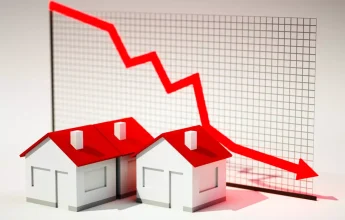What is happening in Canadian Real Estate 2024?

Canadian Real Estate 2024: Bubble or Balloon? A Deep Dive Into the Highs and Lows
Introduction:
The Canadian real estate market has seen significant changes over the past few years. Housing prices in major cities like Toronto and Vancouver rose dramatically from 2017 to early 2020, with prices increasing over 30% in some markets. This rapid acceleration sparked fears of a housing bubble and prompted government policy interventions to cool overheated markets.
While price growth has moderated since 2017, housing affordability remains a major challenge across Canada. The average home price in Canada is now over $700,000, requiring large mortgages that stretch buyers’ budgets. With high demand and limited supply, bidding wars are still common in many regions.
The state of the real estate market has broad economic implications for Canadians. For homeowners, rising home values build equity but also raise concerns of overexposure. High housing costs also make it difficult for first-time buyers to enter the market. Going forward, experts are watching to see if the market shifts towards more balanced conditions or if issues like affordability continue to worsen.
This article will explore the key factors shaping Canadian real estate today, including prices, mortgage rates, supply, investment trends, and government policies. It will provide an overview of where the market currently stands along with a look at potential risks ahead. Understanding the forces driving this complex, important sector is key for buyers, sellers, investors, and policymakers alike.
Read also: Searching for a Prime Location Property in Preston, UK: Spotlight on Arif Patel UK
Housing Prices:
Housing prices in major Canadian cities like Toronto, Vancouver, and Montreal have seen tremendous growth over the past decade, far outpacing increases in local wages and overall inflation. For example, the benchmark price of a home in Toronto has risen from around $400,000 in 2010 to over $1.3 million in 2023 – an increase of over 200%. In Vancouver, the story is similar with the benchmark detached home price rising from $800,000 in 2010 to $1.8 million in 2023.
This rapid home price appreciation has impacted housing affordability, especially for first-time home buyers. Based on data from RBC Economics, the average Toronto household would’ve spent 49% of their income on mortgage payments in 2022. This is up significantly from 27% back in 2017. In Vancouver, this affordability measure has gone from 42% in 2015 to 79% in 2022. Historically, a ratio above 30% has been considered unaffordable by policymakers.
The driving factors behind rising home prices include low interest rates, strong population growth in major cities, lack of housing supply, and high demand from investors. While prices may moderate going forward, the long-term trend of declining affordability is expected to continue in Canada’s largest housing markets.
Interest Rates:
Interest rates play a major role in real estate markets. The Bank of Canada’s overnight rate influences the rates that banks and other lenders offer for mortgages and loans. Lower interest rates make it easier for buyers to qualify for larger mortgages, driving up demand. Higher interest rates decrease purchasing power and demand.
After hitting record lows during the pandemic, interest rates have been rising steadily in 2022. The Bank of Canada has raised its overnight rate from 0.25% at the start of the year to 3.75% as of October. Banks have passed along these increases to buyers through higher mortgage rates. The average 5-year fixed mortgage rate has jumped from under 2% to over 4% in 2022.
These rapid rate hikes have cooled demand significantly, especially for more expensive properties. High rates reduce the amount first-time buyers can qualify for. Move-up buyers are less eager to upgrade with higher carrying costs. Investment buyers pause on adding to portfolios. This drop in demand has slowed bidding wars and price growth.
The Bank of Canada is expected to continue raising rates, likely hitting 4% or more. This will maintain downward pressure on housing markets into 2023. Once inflation is under control, rates are forecast to stabilize and potentially decrease. But a return to the ultra-low rates of 2020 and 2021 is unlikely in the near future. Buyers will need to budget for higher borrowing costs compared to recent years.
Housing Supply:
The housing supply in Canada has struggled to keep up with demand in recent years, contributing to rapidly rising home prices in many markets. New housing construction has lagged due to several factors:
- Shortages of land, labor, and materials have constrained builders’ ability to construct new homes fast enough. Obtaining permits and zoning approval has also slowed development in some regions.
- Construction of new single-family detached homes has declined, while more condo and rental apartment units have been built. This shift doesn’t fully address demand for traditional detached homes.
- Ongoing urbanization has increased demand in major metro areas like Toronto and Vancouver, where geographic constraints limit housing expansion.
The insufficient supply has enabled bidding wars on available homes and led to homes selling well above asking prices in many cases. Canada has historically built fewer homes per capita than other countries, worsening the current shortage.
Active listings of homes for sale have hit record lows in recent months. With limited inventory, potential home buyers end up competing for the same scarce properties. Until supply meaningfully increases, housing will likely remain unaffordable for many Canadians amid stiff competition for the few homes available.
Investment Properties:
Investment properties have become an increasingly prominent part of Canada’s housing market over the past decade. This is especially true in major cities like Toronto and Vancouver, which have seen significant price appreciation that has attracted investor interest.
Statistics show that non-resident ownership has been steadily rising in Canada. In Toronto, the percentage of non-resident owners was around 5-6% in the late 1990s and early 2000s. But that number has climbed to over 9% as of 2020. In Vancouver, non-resident ownership reached a peak of nearly 11% in 2019.
While exact data can be hard to pin down, studies estimate that roughly 1 in 10 homes in Toronto and Vancouver are owned by non-residents. The majority of these owners are investors seeking rental income and capital gains.
High levels of investor activity can contribute to decreasing affordability and availability for local home buyers. When investors purchase properties for rentals, it removes inventory from the market. This drives up prices due to increased competition for the remaining housing stock.
Investors are also able to outbid most average homebuyers, since their purchases are based on investment returns rather than affordability at their income level. This further restricts supply for end-users.
For these reasons, many housing analysts believe that speculative real estate investment has been a major factor in the rapid home price increases in Canadian cities over the past 5-10 years. While it generates profits for investors, it also makes buying a home much more difficult for residents simply seeking a place to live long-term.
Rental Prices:
Rental prices have been increasing rapidly in Canada’s major cities. In Toronto, the average rent for a 1-bedroom apartment reached $2,300 in 2022, up 15% from the previous year. Vancouver saw similar growth, with the average 1-bedroom rent hitting $2,200, an 11% annual increase.
Rents are rising much faster than incomes in these cities. To afford the average 1-bedroom apartment in Toronto or Vancouver, renters now need to spend over 50% of the median pre-tax household income on rent. This makes rental housing extremely unaffordable for average families.
Compared to the cost of home ownership, rents are more reasonable in absolute dollar terms. But with skyrocketing home prices, buying a home is out of reach for many Canadians. The average Toronto home price topped $1.3 million in 2022. In Vancouver, the average detached home costs over $2 million.
High rents and home prices are locking out many Canadians from affordable housing options. Without policy changes to increase supply, strong demand will continue pushing prices higher across rental and ownership markets.
Government Policy:
The Canadian government has introduced several policies in recent years aimed at cooling the hot housing market and improving affordability.
In 2017, the federal government introduced a stress test that requires home-buyers with less than a 20% down payment to qualify at a qualifying rate around 2 percentage points higher than the contractual mortgage rate. This was designed to ensure buyers don’t take on more debt than they can afford if interest rates rise.
In 2022, the stress test qualifying rate was set to the greater of the contractual mortgage rate plus 2% or 5.25%. This change was intended to curb excessive borrowing and house price growth during the pandemic.
The government also introduced a 1% annual tax on vacant or underused real estate owned by non-resident, non-Canadians in 2016. This was designed to discourage foreign speculation in Canadian housing, particularly in cities like Toronto and Vancouver.
At the provincial level, British Columbia introduced a foreign buyers tax of 20% in 2017, which was later raised to 25% for the Greater Vancouver area.
Ontario also introduced a 15% foreign buyers tax in 2017 for the Greater Golden Horseshoe region. These policies aimed to cool markets where foreign buyers were driving up prices.
While the above policies may have taken some steam out of the market, prices have still increased dramatically in recent years. The government continues facing pressure to address housing affordability through policy, but finding an appropriate balance remains challenging.
Forecasts:
The Canadian real estate market is expected to cool somewhat in 2023 after several years of rapid price appreciation. However, forecasts vary by region.
In Ontario and British Columbia, home prices are projected to decline moderately or remain flat as interest rates put a damper on demand. Sales activity is also expected to slow after frenzied levels in 2021-2022.
In contrast, Prairie provinces like Alberta and Saskatchewan could see slight price gains continue, though at a more moderate pace. Major cities like Toronto and Vancouver will likely drive trends, where affordability is most stretched and higher rates have the biggest impact. However, suburban and smaller markets across Canada could prove more resilient as remote work trends persist.
On the supply side, housing completions are expected to ramp up over 2022-2023 after lagging behind population growth for years. This added inventory should provide some relief for the severe supply-demand imbalance in markets like the Greater Toronto Area. However, construction backlogs mean supply will remain tight.
Overall, expert forecasts point to a soft landing for housing in 2023 rather than a sharp correction. The market is re-balancing after an unprecedented boom, though stubborn shortages will continue supporting high prices. Regional variations will be key, with eastern markets generally more affordable than Ontario and British Columbia.
Risks:
The Canadian real estate market faces some notable risks going forward. There are a few key vulnerabilities and potential triggers for changes to be aware of:
- Overvaluation in some markets – Home prices in cities like Toronto and Vancouver have risen rapidly in recent years and may be overvalued relative to incomes and rents. This leaves these markets vulnerable to corrections.
- High household debt – Canadian households have taken on increasing debt loads to finance home purchases. This leaves them vulnerable if interest rates rise or the economy weakens.
- Investor speculation – A significant share of demand has come from investors, rather than owner-occupiers. Investor demand could fade quickly if prices stop rising.
- Interest rate hikes – Rising interest rates from the Bank of Canada could dampen demand, slow price growth, and make debt more expensive to service. This is a key risk to monitor.
- Economic shocks – An economic downturn or higher unemployment could reduce demand for homes. This could trigger price declines, particularly if coupled with higher interest rates.
- Government intervention – Governments may step in with new cooling measures if prices rise further. For example, new taxes on foreign buyers or vacant homes.
The Canadian real estate market has shown resilience so far, but remains vulnerable to shifts in economic conditions or buyer sentiment. Paying attention to risks and imbalances will be prudent for market participants.
Conclusion:
The Canadian real estate market has seen significant changes over the past few years. Housing prices have risen dramatically in major cities like Toronto and Vancouver, driven by low interest rates, limited housing supply, and high demand from investors and first-time home-buyers. This rapid price appreciation has made housing unaffordable for many Canadians, especially in large urban centers.
While prices may continue to climb in the short-term, there are risks on the horizon. Rising interest rates could dampen demand, especially for highly leveraged investors. Oversupply is also a concern in some regions that have seen a surge in new construction. Government policy and regulation changes, like the mortgage stress test, have already begun cooling markets. Overall, the outlook for Canadian real estate remains positive, but uncertainty exists as the market transitions towards more balanced conditions.
Key trends to watch include changes in housing starts, sales activity, price growth, interest rates, and demographics. With proper oversight and measured policy responses, Canada’s housing market can return to sanity without a destabilizing correction. The long-term fundamentals of immigration, urbanization and strong economic growth underpin housing demand. But buyers and investors should act prudently, as markets rarely move in a straight line.






